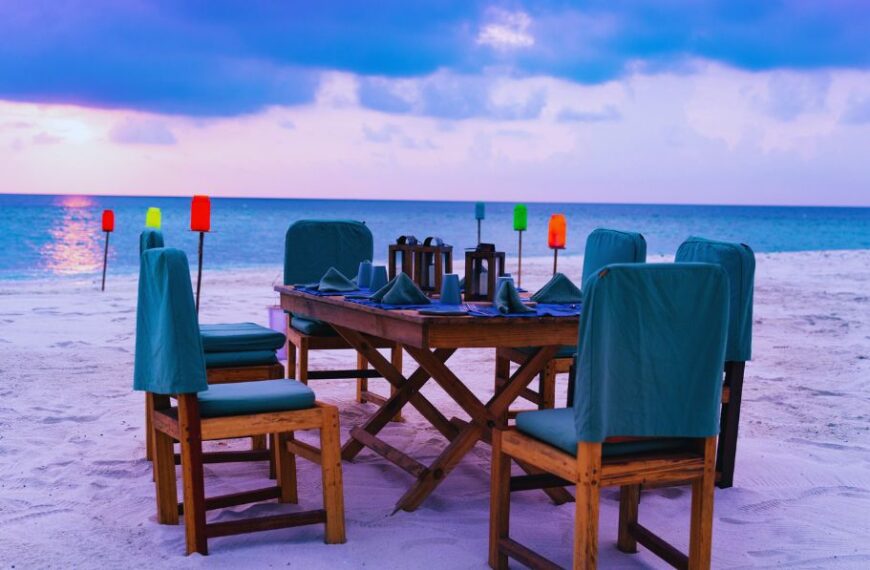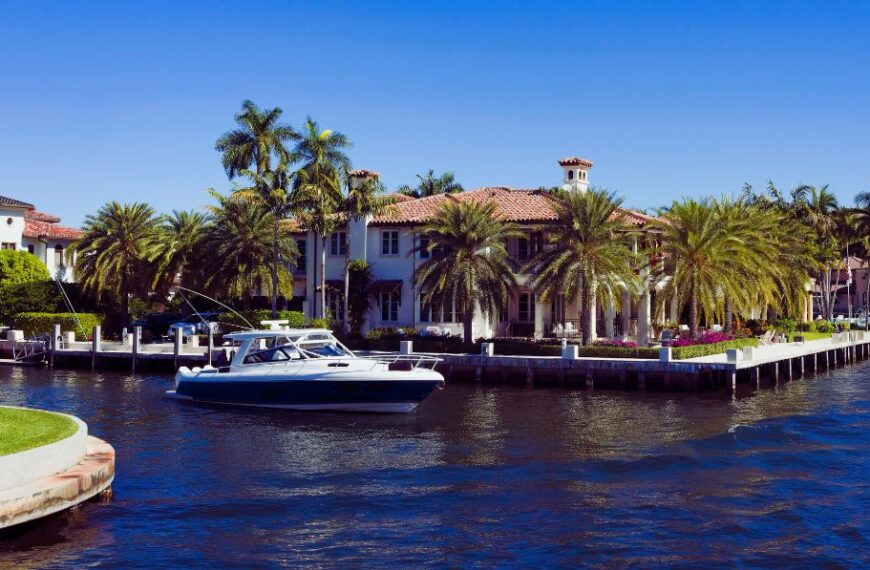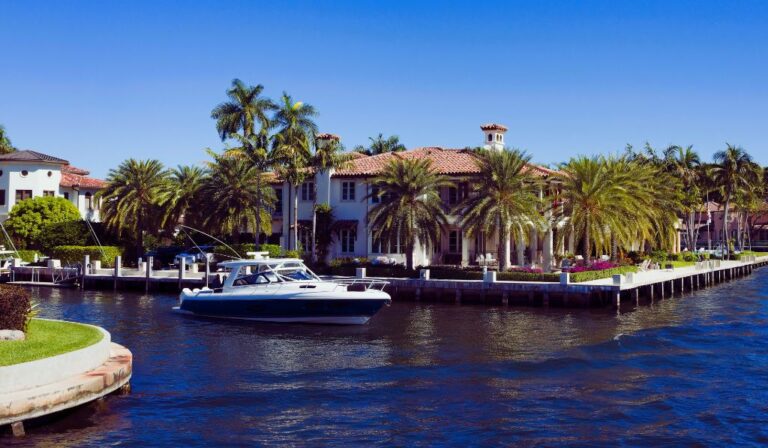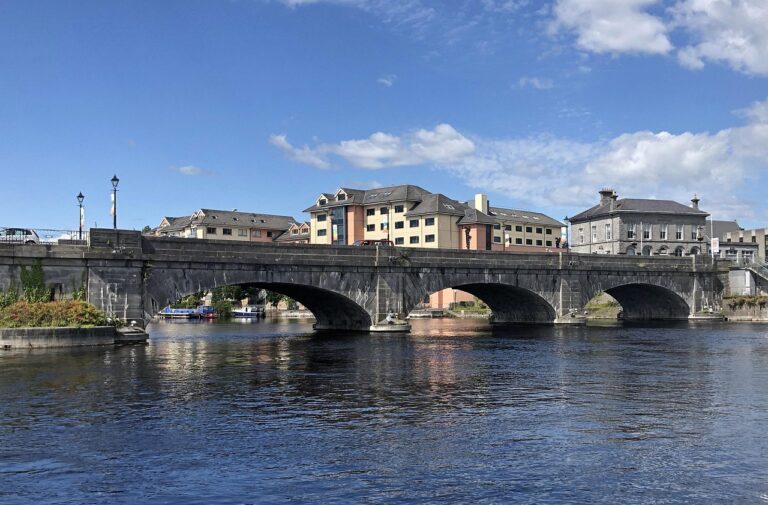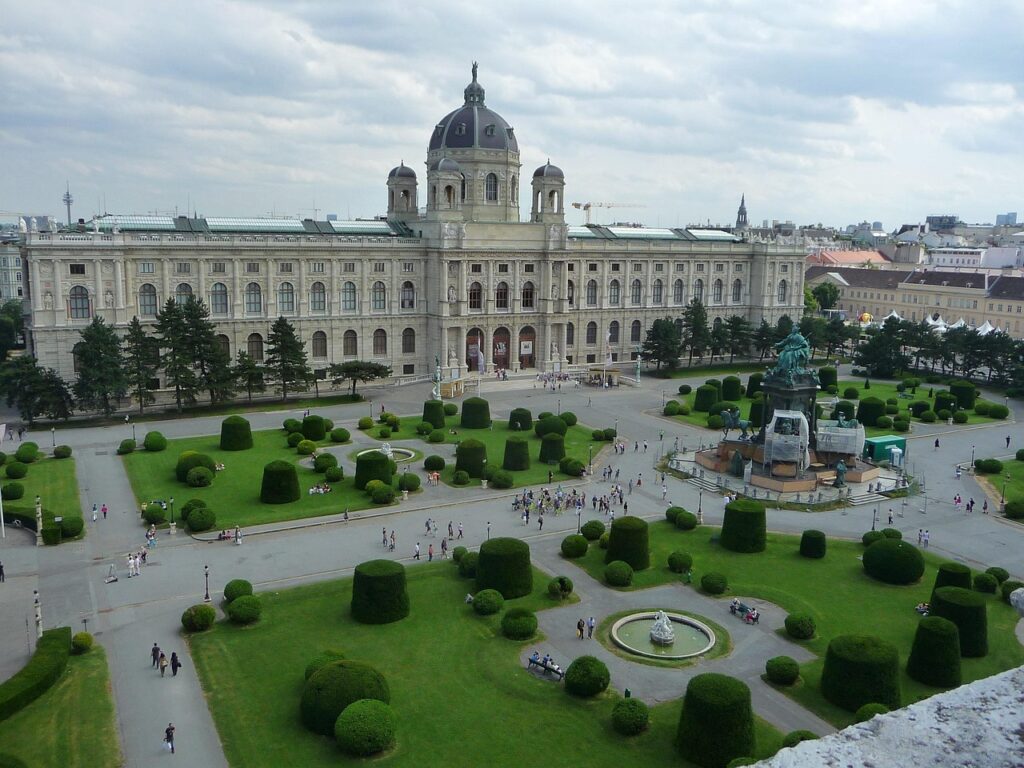
Planning a trip to Vienna, the capital of Austria, can be overwhelming because this city has so much to offer. From stunning palaces, world-class museums, to rich history and vibrant culture, every corner of the city tells a story. Whether you’re a fan of Vienna’s famous coffee houses (Kaffeehäuser) or just want to enjoy a relaxing coffee, you’ll find something to love here. The charm of the Austro-Hungarian Empire still lingers in the bustling streets, filled with magnificent architecture and awe-inspiring landmarks. If you’re creating a Vienna itinerary for first-timers, be sure to visit Klimt’s masterpieces or the grand halls of the Baroque era that define the city’s visual splendor.
But how many days do you need to experience Vienna? If you’re short on time, a well-planned itinerary is key to ensuring you don’t miss the best attractions. A two-day trip is enough to visit the most famous sites, but if you want to dive deeper into history and heritage, three or more days will give you a more relaxed experience. Imagine spending your mornings indulging in rich cake and aromatic coffee, your afternoons exploring elegant museums, and your evenings enjoying a glass of wine in a cozy tavern (Heurigen). Whether you’re here for sightseeing or simply soaking in the city’s unique energy, Vienna never disappoints.
For those who love music and the arts, visiting the opera and following in the footsteps of legendary composers is a must. If you’re more into hidden gems, wandering through the city’s charming neighborhoods will reveal a different side of Vienna beyond the tourist hotspots. Every moment in this fascinating city peels back another layer of its beauty, making your stay unforgettable. So, no matter how much time you have, Vienna welcomes you with open arms and an experience you won’t forget
Table of Contents
ToggleThe Ideal Length of Stay in Vienna
When planning a trip to Vienna, the stunning city in Austria, deciding how many days to stay is essential based on your travel style. If you want to explore the main attractions without rushing, I would recommend at least four days. This will give you enough time to visit famous landmarks, experience the rich history, and soak in the city’s vibrant culture. However, if you’re quick and prefer an efficient itinerary, three or three and a half days can also work. When I traveled with my mom, we took things slow, walking through the bustling streets at a relaxed pace, savoring the city’s famous coffee houses (Kaffeehäuser) and delicious cake. Your decision should be based on how much of Vienna you want to see and how deep you want to dive into its heritage.
How to Optimize Your Time
Making the most of your time in Vienna requires a well-planned itinerary. Whether you choose two, three, or four days, the key is to optimize your visit by prioritizing key attractions and booking tickets in advance. You don’t want to waste precious moments deciding on the spot. Instead, create a smart plan that lets you explore efficiently. Top tips include using public transport, staying near the city center, and grouping nearby landmarks. This way, you can save money and have more time for unique experiences like enjoying local wine at a traditional tavern (Heurigen) or attending a performance at the opera. Every minute counts, so making smart choices ensures you get the most out of your travel experience.
Who This 5-Day Vienna Itinerary is For
This itinerary is designed for travelers who want to experience the historic grandeur of Vienna while also discovering its modern energy. When I visited as part of my trip through Budapest and Prague, I was fascinated by the impact of the Austro-Hungarian Empire on art and architecture. I wanted to see how history shaped the city’s famous palaces, grand museums, and elegant streets, as well as how the aftermath of WW2 and the division between East and West influenced Vienna. This plan is perfect for those who love food, wine, and cultural experiences. Whether you’re a solo traveler who enjoys wandering through historic streets or someone looking for a deeper connection with local people, this itinerary will help you unforgettably explore Vienna.
How to Get Around in Vienna
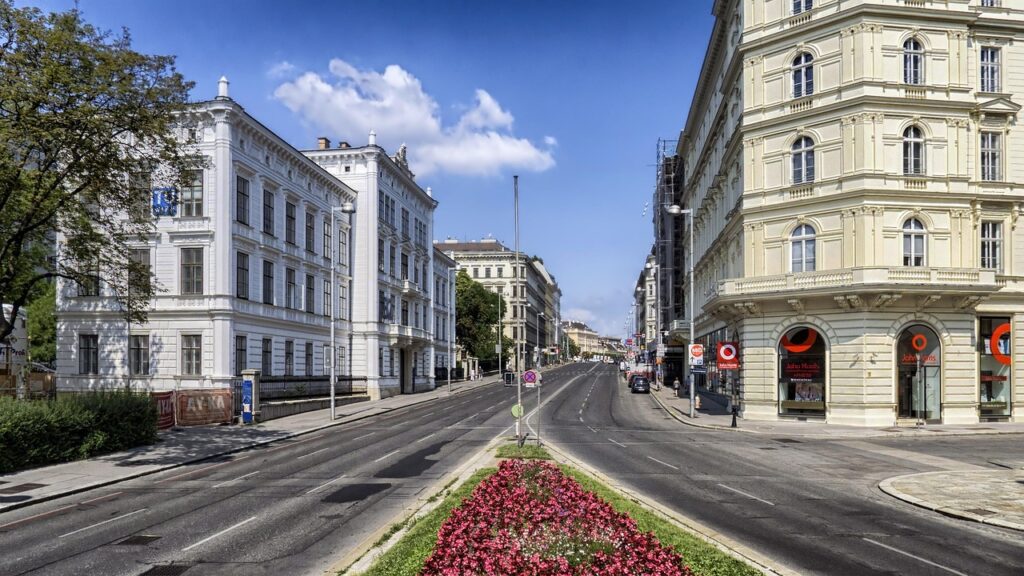
Vienna is an incredibly walkable city, making it perfect for exploring on foot. During my trip, I followed my itinerary using just my own two feet and public transportation. For ease of travel, you can opt for a travel card if you plan to take public transport frequently, or you can save money by paying for single journeys as I did. If you’re looking for a more convenient option, the Vienna Pass offers a hop-on hop-off bus that takes you to all the major tourist sites without needing other forms of transport. For a more cost-effective choice, the City Card provides free use of public transport and discounts on various attractions around the city. Whether you’re staying in the Old Town or at places like the 25 Hours Museum Quarter, both offer easy access to the center and nearby attractions, making it simple to explore without the hassle of large crowds and fellow tourists.
How to Get to Vienna by Air

If you’re flying into Vienna, Vienna International Airport is located about 20 km from the city. From there, you can easily get into the city via public transport, such as the S-Bahn or City Airport trains. However, after a long flight, I recommend considering a private transfer for more comfort. The convenience of a door-to-door service allows you to skip the hassle of navigating public transport with luggage. Be sure to book in advance to make your journey smoother and stress-free.
How to Get to Vienna by Car

If you’re road-tripping through Europe, Vienna is easily accessible by car. Driving into the city is straightforward, but I recommend staying at a hotel with free parking, as street parking in Vienna can be a challenge. If you choose to stay a little outside the city center, you can still make use of the excellent public transport system to get around easily. Make sure to plan your route using a map and consider parking in areas with good transport links for convenience.
Best Time to Visit Vienna: Why Shoulder Season is Perfect
If you’re looking for the best time to visit Vienna while avoiding large crowds and high travel costs, the shoulder season is your ideal choice. This period falls in April, May, September, and October when there are fewer tourists, yet all top attractions remain open. You can explore Vienna at a relaxed pace without fighting crowds or waiting in long lines at famous landmarks. The weather during these months is pleasant, making it comfortable to walk around, enjoy sightseeing, and take in the city’s historic charm without the intense summer heat. Tourism is still active, but less crowded streets allow for a more authentic experience of Vienna’s culture, architecture, and history.
Another major benefit of shoulder season travel is the affordable costs of accommodations and airfare. Many hotels offer discounts, and finding cheap flights to Vienna is much easier. With lower demand, you’ll see better availability in prime locations, adding to your convenience and comfort. My trip to Vienna in May with my mother was the perfect example—we barely had to wait in lines, and the city felt alive but not overwhelming. Whether you’re planning a short getaway or an extended stay, visiting during shoulder season ensures a budget-friendly, enjoyable, and stress-free travel experience.
Best Passes for Your Vienna Itinerary
If you’re planning your Vienna itinerary, consider getting a tourist pass to save money and time. The Vienna Pass gives access to over 90 museums, sights, and attractions, including a Hop On Hop Off bus, a river cruise, and fast-track entry to some top sights. This pass comes in 1-day, 2-day, and 3-day options, allowing unlimited visits within the time limit. The skip-the-line feature is especially useful in peak season, letting you avoid long queues at select attractions. Another option is the Flexi Pass, which offers fewer features but is cheaper. Unlike the Vienna Pass, which works by days, the Flexi Pass is based on a set number of visits, meaning once you reach your allotment, you’re done.
Why You Should Book in Advance
If you love spontaneous trips, you may hesitate to book ahead, but planning can prevent major disappointments. Many museums, excursions, and guided tours sell out quickly, especially through GetYourGuide. I once visited Florence without pre-booking and almost missed seeing David! While Vienna isn’t as busy, its top attractions can still get crowded. Since COVID, many places now require timed entry, so pre-booking ensures you don’t miss out on your must-see spots. A guided tour not only guarantees entry but also gives you access to an expert who can enhance your sightseeing experience and help you save time in the city.
Where to Stay for Convenience
READ MORE BLOGS:
Choosing centrally located accommodations can make your travel experience smoother. My trip to Vienna involved staying in two hotels—one in the Favoriten district, near Wien Hauptbahnhof (Vienna’s main train station), which was perfect for taking a train to Salzburg. Later, I stayed in Sechshauser, near Schönbrunn Palace, to make visiting that attraction easier. Whether you prefer a hotel or a hostel, staying close to transport hubs and major landmarks will add convenience to your journey, especially if you plan to explore nearby cities like Munich, Ljubljana, or Zagreb. By booking early, you can secure the best locations at affordable rates.
Vienna Travel Tips: Save Time & Money on Your Trip
Planning your Vienna itinerary wisely can help you save time and money while making the most of your trip. From booking tickets in advance to choosing the right hotel location and getting a Vienna Pass, small decisions can make your travel experience hassle-free.
Book Tickets in Advance for a Hassle-Free Experience
To make your Vienna itinerary smooth, always book tickets online in advance. Using platforms like Get Your Guide, Viator, or Tiquets ensures you have your tickets on your phone, avoiding the hassle of carrying paper copies. This also helps you stay away from hawkers dressed as Mozart, who sell overpriced tickets in the city. Whether you’re visiting famous museums, sights, or other attractions, securing your tickets beforehand saves you from long waiting lines, letting you enjoy more of Vienna without delays.
Pick the Right Hotel Location for Convenience
Where you stay can make a big difference in your travel experience. While choosing accommodation on the outskirts may seem like a good way to save money, it will waste time commuting instead of exploring Vienna’s best attractions. A great option is MuseumsQuartier, particularly the 25 Hours Museum Quarter, which features a stunning rooftop bar and a quiet environment in the evenings. It’s also an easy walk to public transport and close to the Old Town. If you prefer to stay in the Old Town, keep in mind that prices are higher, and the area remains busy until late at night.
Consider a City Pass and Reserve Restaurants in Advance
Unlike other European cities, museums in Vienna are not free, so buying a City Pass can help you save money. A Vienna Pass, Flexi Pass, or City Card will give you discounted access to multiple attractions, making it a cost-effective choice for your trip. Also, if you plan to dine at some of the best restaurants, make sure to book in advance. Many popular dining spots get fully booked, and without a reservation, it’s unlikely you’ll get a table, especially in summer. Planning these details before arriving will ensure a stress-free and enjoyable experience in Vienna.
DAY 2: Exploring the Hofburg Palace and Sisi Museum
The Hofburg Palace and Sisi Museum offer a deep dive into Austria’s royal history. Explore the grandeur of the palace and the fascinating life of Empress Elisabeth.
A Look Inside the Hofburg Palace
The Hofburg Palace is one of Vienna’s most impressive historical sites, once home to Austrian royalty and the political center of the monarchy for over 600 years. Today, visitors can take a tour of the Imperial Apartments, admire the Silver Collection, and learn about the life of Empress Elisabeth at the Sisi Museum. This museum provides a detailed and informative look at Sisi’s extraordinary life and struggles, making it a must-visit for anyone interested in history. Adding this stop to your itinerary will give you a deeper understanding of Austria’s past and its royal heritage.
Other Attractions at the Hofburg Palace

Beyond the Sisi Museum, there are other fascinating places to visit within the Hofburg Palace. The Treasury holds a stunning collection of royal jewels, while the Imperial Crypt is the resting place of Austrian emperors. For those interested in art and culture, the Imperial Carriage Museum and the Spanish Riding School showcase magnificent displays of historical craftsmanship and equestrian skills. If you fall in love with Hofburg, you’ll want to explore every corner of this grand attraction.
Tours and Ticket Options
To make the most of your visit, consider booking a Day Ticket that includes the Hofburg Palace and the Sisi Museum with an Audio Guide or Guided Tour (duration: 1.5 hours). If you want a more extended experience, the Sisi Ticket grants access to Schönbrunn Palace, the Vienna Furniture Museum, and the Sisi Museum, with a total duration of 3 hours. Many of these sites are covered by the Vienna Pass, so if you have one, you won’t need to buy separate tickets. It’s best to book online in advance, as this is a top attraction and can get busy during peak times.
Discover the State Hall of the Austrian National Library

The State Hall of the Austrian National Library is the largest library in Austria, located within the Hofburg Imperial Palace. With its Baroque architecture and over 12 million items, it is a must-visit for history and book lovers in Vienna.
A Grand Library in the Heart of Vienna

The State Hall of the Austrian National Library is one of the most breathtaking places to visit in Austria. Located inside the Hofburg Imperial Palace, it is the largest library in the country, holding over 12 million items in its collections. Originally known as the Imperial Court Library, this Baroque Library was renamed in 1920. If you’re already visiting the Imperial Apartments and the Sisi Museum, stopping by this incredible space is a must. The museums, special collections, and archives make it a dream destination for any library lover. If you’re deciding how many days in Vienna to spend, make sure to allot time to explore this masterpiece.
Tour Options and What to Expect
A visit to the State Hall is not only visually stunning but also informative. The recommended duration is around 0.5 hours, but you might want to stay longer if you love history and books. An audio guide is available for an additional fee, allowing you to learn more about its collections. For those interested in a guided experience, guided tours in German take place every Thursday at 6 p.m. and Sunday at 3 p.m..
Tickets and Booking in Advance
If you have the Vienna Pass, entry to the State Hall is already covered. Otherwise, it’s best to book online in advance to secure your spot. In addition to the Austrian National Library, you can also visit nearby attractions like the Literature Museum, Papyrus Museum, Globe Museum, and Esperanto Museum. With so much history and culture in one place, this is an essential stop on your Vienna itinerary.
Explore the Magnificent Schönbrunn Palace
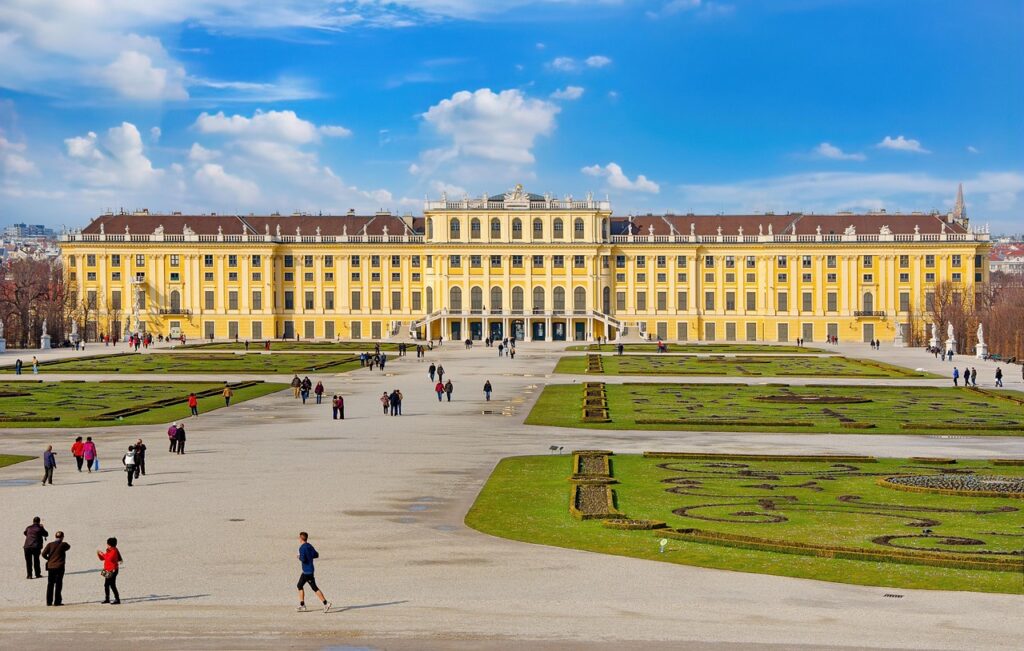
One of Vienna’s most famous attractions, Schönbrunn Palace is a stunning example of Baroque architecture and a UNESCO World Cultural Heritage Site. Originally built as a royal summer residence, it became the center of court life during the reign of Maria Theresia in the 18th century. This grand monarch shaped European politics, and her legacy continues to fascinate visitors. The gardens surrounding the palace are breathtaking, making it a perfect spot to stroll and take in the beauty of Vienna. If you are wondering how many days in Vienna to spend, be sure to include a visit to this historic site.
The State Apartments Tour: Step Inside History
The State Apartments at Schönbrunn Palace provide a glimpse into the lavish lifestyle of royalty. I took the Grand Tour, but there are other options like the Imperial Tour, Maria Theresia Guided Tour, and the Franz Joseph Guided Tour. The Great and Small Galleries are among the highlights, used for ceremonial events, balls, and family celebrations from the time of Maria Theresia until the 20th century. Beautiful paintings in these rooms depict significant events in history. The palace was home to rulers and the mother of Marie Antoinette, whose family connections spread across Kings and Queens of Europe. Photography is not allowed inside, so be sure to enjoy the details as you walk through.
Apple Strudel Show: A Taste of Vienna’s Iconic Pastry
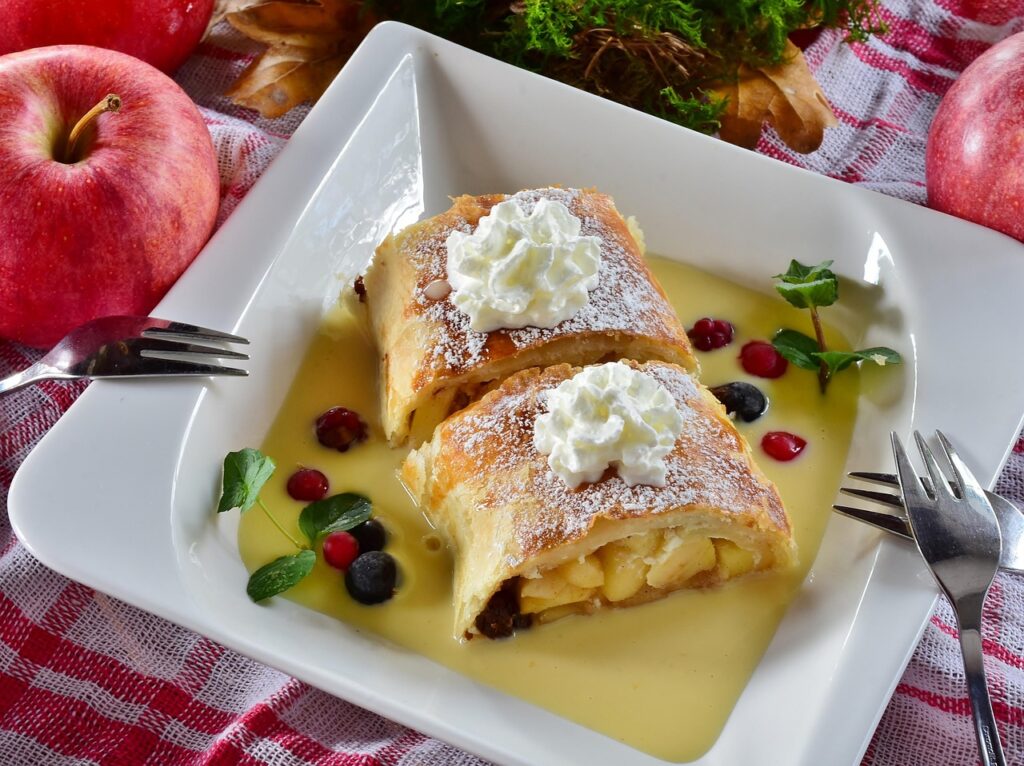
If you love desserts, the Apple Strudel Show is a unique experience. This traditional Viennese pastry has been enjoyed since 1696 and is one of Vienna’s iconic dishes. My visit was extra special because my Grandmother once made this dish, bringing a personal connection to the experience. At the show, expert bakers reveal the secrets behind making the perfect apple strudel. You’ll see the live demonstration of the dough preparation, baking, and final product before enjoying a warm, freshly baked slice.
Day 3rd: Visit St. Stephen’s Cathedral and Stephansplatz
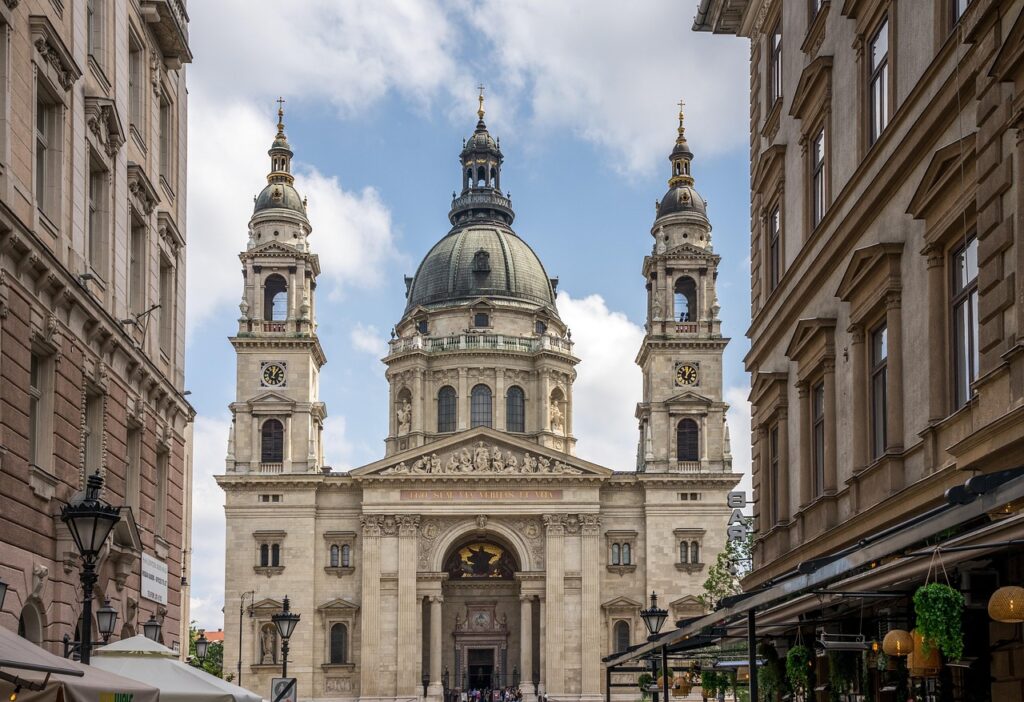
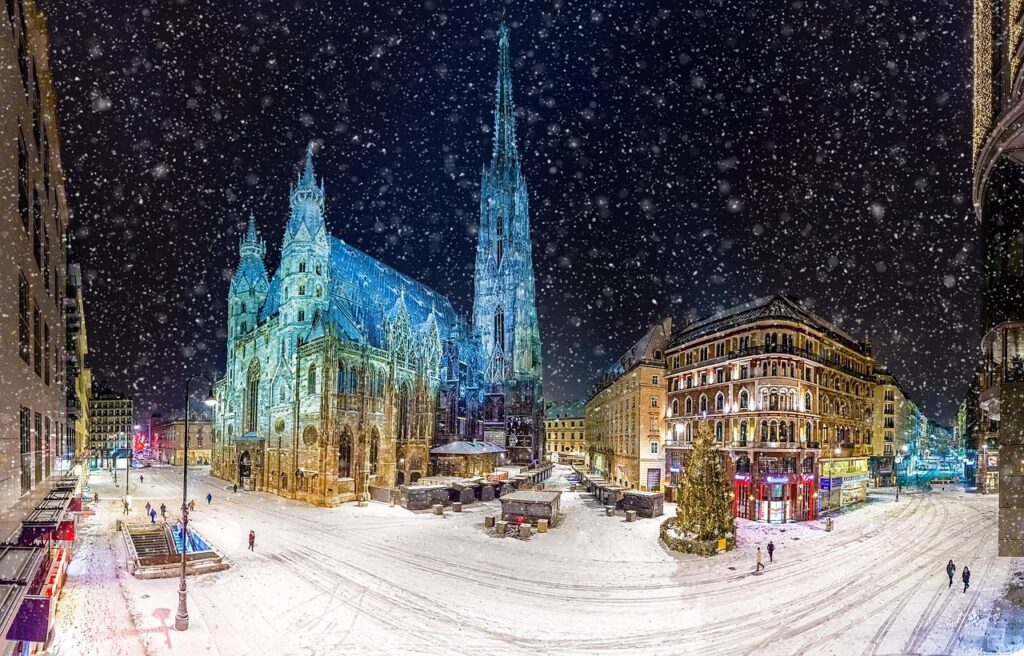
One of the most famous landmarks in Vienna is Stephansdom (St. Stephen’s Cathedral), located in Stephansplatz, a lively square filled with new and old architecture. As one of the tallest churches in the world, this cathedral is a must-see for history and architecture lovers. Nearby, you’ll find shopping streets, perfect for exploring after visiting the cathedral.
If you’re planning a tour, there are several options, including the All-Inclusive Ticket, which gives access to the South and North Towers, Catacombs, Cathedral Museum, and the Treasury of the Teutonic Order. You can also opt for a Self-Guided Tour, a Guided Cathedral Tour, or a Catacomb Tour. While Stephansdom is not included in the Vienna Pass, you can book tickets online in advance.
A Wine Lover’s Escape to Grinzing
For those who enjoy wine, Grinzing is a charming wine village on the edge of Vienna where you can visit a traditional Heuriger (Wine Tavern). Here, you can enjoy local wine and food while listening to live music. To reach Grinzing, take the Green Line on the Hop On Hop Off bus, which is included with the Vienna Pass.
The area is known for its vineyards, making Vienna the only capital city in the world that grows and produces its wine. A visit to Kahlenberg Hill offers breathtaking views of the city, although getting there takes about an hour. If you plan to experience Grinzing fully, including time for dining, drinking, and traveling, allot at least four hours in your itinerary.
Explore Vienna’s Vibrant Naschmarkt

If you love markets, don’t miss Naschmarkt, Vienna’s most famous market, offering over 120 market stands and restaurants. From Viennese and Italian cuisine to Indian and Vietnamese dishes, this is a great place for food lovers. The market operates daily except Sundays, opening at 6 am, with stalls closing around 7:30 p.m. on weekdays and 5 p.m. on Saturdays.
While my Mom enjoyed the shopping experience, I found the local bites and culinary tours the best part. If you love food, consider adding this stop to your itinerary when deciding how many days in Vienna to spend. On Saturdays, the market also hosts a Flea Market, making it a perfect spot to find unique items and enjoy a vibrant atmosphere.
Day 4:
Explore Peterskirche: A Hidden Gem in Vienna
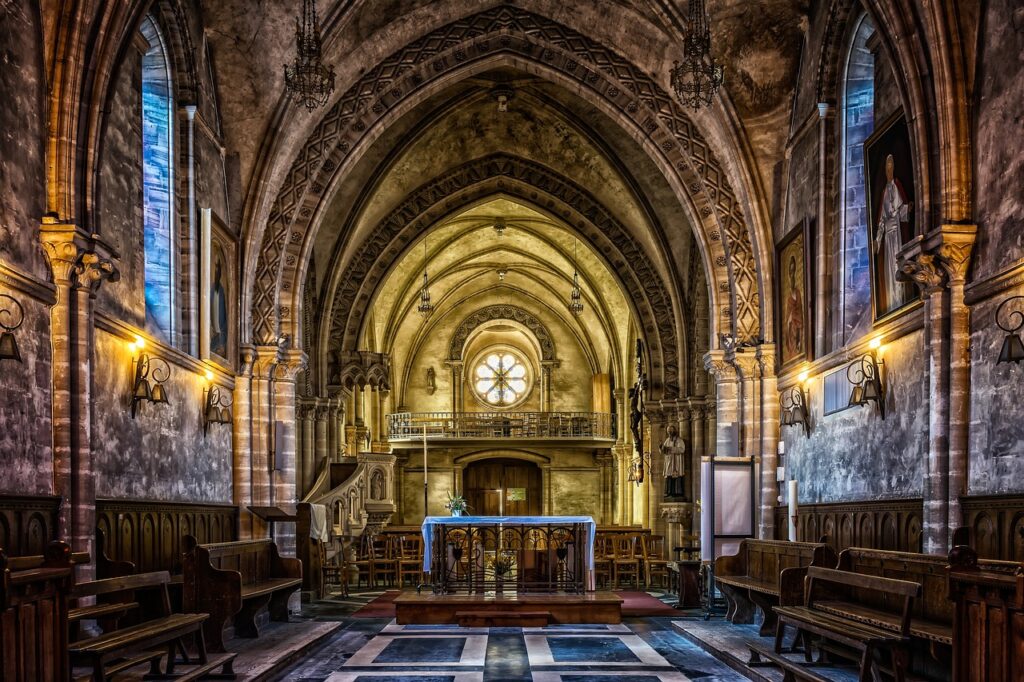
Peterskirche (St. Peter’s Church) is a beautiful Baroque Roman Catholic parish church located in the heart of Vienna. Although the current structure was built later, the original Roman church on this site dates back to the Early Middle Ages and was likely constructed over a Roman encampment. It is often considered one of the oldest churches in Vienna. A visit here takes about 30 minutes, making it a great quick stop while exploring the city’s historic center.
Belvedere Palace: Art, History, and Stunning Gardens

The Belvedere Palace was originally built as the summer residence of Prince Eugene of Savoy (1663–1736) and now serves as one of Vienna’s most famous art museums. It houses world-renowned artwork, including several masterpieces by Gustav Klimt. The palace consists of the Upper Belvedere and Lower Belvedere, both separated by breathtaking gardens. You can rent an audio guide in multiple languages, including German, English, French, Italian, Spanish, Japanese, Korean, and Russian, or enjoy a multimedia tour in Austrian sign language. If you’re not a fan of art museums, you may choose to skip this step when planning how many days in Vienna to spend.
Tour Options for Belvedere Palace
Visitors can choose from different tours available, including the Upper Belvedere Ticket, Lower Belvedere Ticket, or a Combo Upper & Lower Belvedere Ticket. The recommended duration for a visit is 2.5-3 hours, giving you plenty of time to explore the art, architecture, and museum collections.
Relax with a City Cruise on the Danube
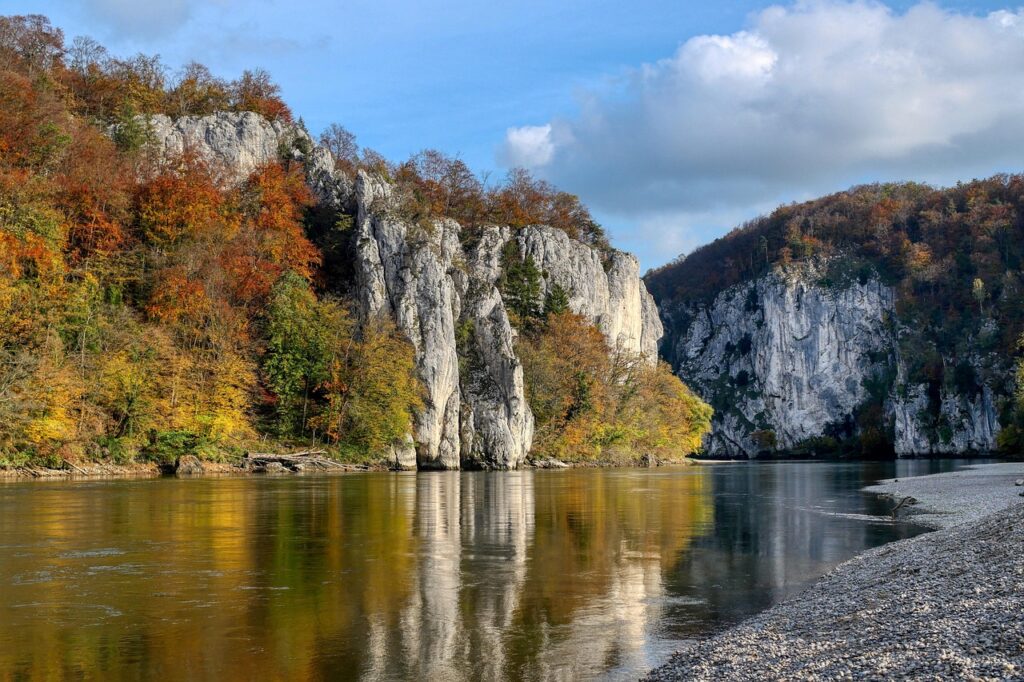
For a relaxing experience, take a City Cruise along the Danube Canal on the MS Blue Danube. This one-hour trip allows you to see unique landmarks like the Urania Observatory, Jean Nouvel’s Hotel, Hans Hollein’s Media Tower, Otto Wagners Schützenhaus, and the Spittelau Waste Incineration Plant designed by Friedensreich Hundertwasser. The cruise is included in the Vienna Pass, with standard ticket prices at €29.50 for Adults and €14.75 for Children. However, since there are no significant sights along the route, you may choose to skip this activity when deciding how many days in Vienna to plan.
Is 5 Days in Vienna Too Much?
Spending 5 days in Vienna can be a fantastic way to fully experience the city’s history, culture, and architecture without feeling rushed. My trip included stops in Germany, Slovenia, and Croatia, allowing me to explore at a relaxed pace. If you enjoy museums, historical sites, and local cuisine, this time frame is perfect. One unique experience is Time Travel Vienna, an interactive attraction featuring a 5D cinema, VR glasses, multimedia shows, animatronic wax figures, and historical reenactments about Mozart, Strauss, the Habsburgs, air raids, the plague, and more. It’s a great activity for families with kids or travelers who want a fun and engaging way to learn about Vienna’s history.
Explore Vienna’s Iconic Landmarks
For lovers of Baroque architecture, Karlskirche (St. Charles Church) is a must-visit. This remarkable church in Karlsplatz is known for its green dome and dedication to Saint Charles Borromeo, a sixteenth-century counter-reformer. If you want to cover a lot of ground in a short time, consider a walking tour through GetYourGuide, which offers an excellent way to explore the city’s historic streets and famous attractions.
Unique Attractions and Art Museums in Vienna
1- Prater Amusement Park: A Historic Fairground Experience
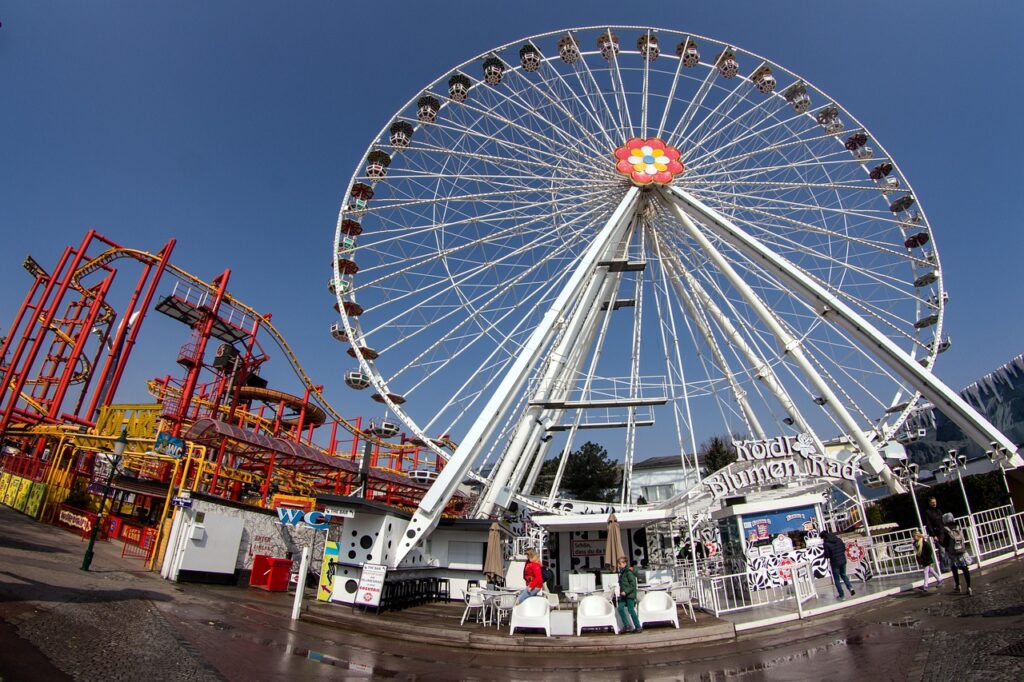
For a fun and historic adventure, visit Prater Amusement Park, home to the giant Ferris wheel dating back to 1897. This famous attraction offers stunning views of Vienna’s skyline and is a great place to enjoy classic rides, carnival games, and delicious local treats. Whether you want a thrilling ride or a relaxing stroll, Prater is a must-visit.
2- Kunsthistorisches Museum: A Treasure Trove of Masterpieces
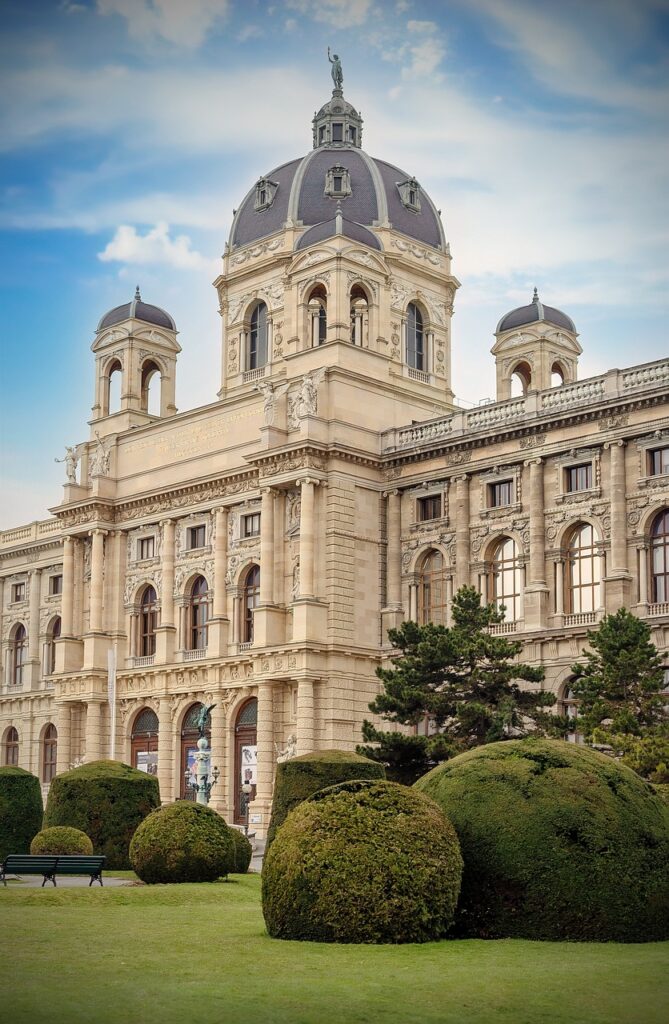
The Kunsthistorisches Museum is one of Vienna’s most prestigious art museums, housing masterpieces from legendary artists like Raphael, Velázquez, Rembrandt, Vermeer, and Pieter Bruegel the Elder. This stunning palatial museum is a paradise for art lovers, offering collections of Renaissance, Baroque, and Classical artworks.
3- Hundertwasser Museum: A Blend of Art and Architecture

For a quirky and colorful experience, visit the Hundertwasser Museum, designed by Friedensreich Hundertwasser. This museum is famous for its vibrant architecture, uneven floors, organic shapes, and eco-friendly designs. Inside, you’ll find permanent exhibitions of Hundertwasser’s unique art, as well as rotating exhibits from other contemporary artists.
With a mix of historical sites, museums, art, and entertainment, 5 days in Vienna is the perfect way to explore, relax, and experience the city’s rich cultural scene.
Best Places to Eat in Vienna
Explore Spittelberg Quarter for Cafes and Dining

The Spittelberg Quarter in Vienna is a perfect spot for a relaxing meal. It’s filled with cafes, restaurants, and garden bars where you can enjoy some live music while strolling down cobblestone streets lined with Baroque townhouses. This area offers a glimpse into what 18th-century Vienna looked like. During Easter and Christmas, the quarter transforms into a seasonal Christmas market, adding to the charm and giving you a chance to enjoy some holiday cheer while exploring.
Authentic Viennese Food at Schweizerhaus
For an authentic Viennese food experience, Schweizerhaus in Prater is a must-visit. Located in the heart of an amusement park, the restaurant has a large beer garden, perfect for relaxing after a busy day of sightseeing. Enjoy dishes like goulash, wiener schnitzel, and pork stilts, all served with traditional potato buffers. Don’t forget to try their famous Budweiser Budvar beer, served with less CO2. It’s a unique experience for anyone who enjoys great food and beer in a relaxed atmosphere.
Savor Traditional Coffee at Café Sacher
No trip to Vienna is complete without experiencing its famous coffeehouse atmosphere. Café Sacher is a great place to try the iconic Sacher-Torte, a chocolate cake that has become a staple of Viennese culture. While it’s famous, if you’re not a fan of dry cake, you may want to explore other coffee houses in Vienna for a more affordable and equally authentic experience. Regardless, Café Sacher offers a glimpse into the city’s rich coffee culture, often frequented by famous visitors throughout history.
CONCLUSION:
Vienna offers a blend of culture, history, and beauty, making it an unforgettable destination. 3 to 4 days is ideal for experiencing its top attractions without rushing. From Schönbrunn Palace to St. Stephen’s Cathedral, you’ll dive into the city’s rich history and vibrant culture. If you prefer a quicker trip, 2 days can cover the essentials, but longer stays let you soak in more. Consider the shoulder season for a more affordable, less crowded experience. Whether you’re exploring museums, sipping coffee in cozy cafes, or wandering historic streets, Vienna welcomes all with open arms. Your time here will be filled with amazing memories, no matter how long you stay!
FAQS:
Q: How many days are sufficient for Vienna?
A: For a well-rounded experience, 3 to 4 days are sufficient to explore major attractions like Schönbrunn Palace, St. Stephen’s Cathedral, and museums. You can cover the city’s key sites without feeling rushed, enjoying a relaxed pace.
Q: Is 2 days in Vienna enough?
A: 2 days will allow you to see highlights like St. Stephen’s Cathedral and Schönbrunn Palace, but it will be a fast-paced visit. You’ll miss some lesser-known gems, but it’s still enough for an introduction to the city.
Q: How long should I stay in Vienna for the best experience?
A: For the best experience, 3 to 5 days is ideal. This allows you to explore Vienna’s rich culture, visit major landmarks, enjoy local food, and experience the city at a comfortable pace without feeling rushed.
Q: Can I see Vienna in one day?
A: You can visit some main attractions in one day, but you’ll only scratch the surface. A 1-day visit will focus on iconic sites like St. Stephen’s Cathedral, Hofburg Palace, and Klimt’s masterpieces, but it won’t give you time to dive deep into the city’s history.
Q: What is the minimum number of days needed to visit Vienna?
A: The minimum number of days would be 2 days, allowing you to see the must-see landmarks like Schönbrunn Palace and St. Stephen’s Cathedral, but it would be a quick visit with little time for in-depth exploration.


